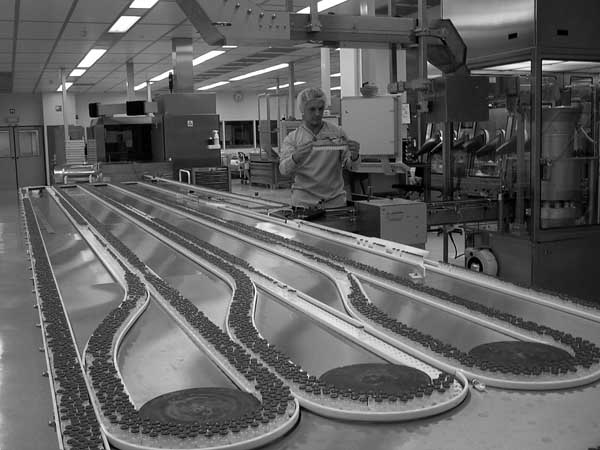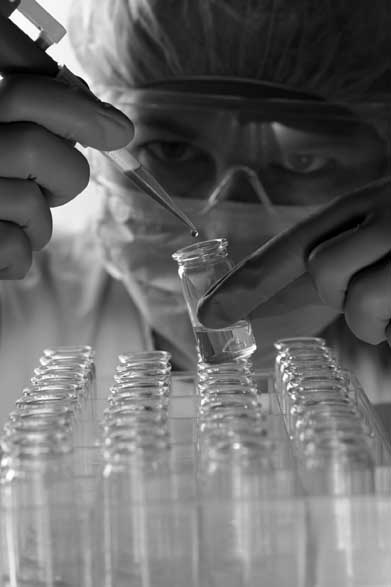Last month the largest pharmaceutical company in the world decided its profits needed a boost – by closing one of Britain’s premier research institutes…
Blow to Britain as Pfizer closes Kent labs
WORKERS, MAR 2011 ISSUE
Nothing makes finance capitalists happier than a good spot of destruction. On 1 February, shares in Pfizer, the world’s largest pharmaceutical company, soared by 5.5 per cent. The reason: its announcement that it is to close its giant research and development site in Sandwich, Kent, as part of a reduction in spending to offset expected reductions in revenue. The decision “should be met with a sigh of relief”, said an analyst for Credit Suisse.

|
| Pfizer’s new plant in Belgium. In November 2010 it announced it was moving its veterinary research from Sandwich, Kent, to Belgium. |
What if a company took the opposite point of view? Two days after Pfizer made its announcement, rival drug company Merck announced a different strategy, one of investing in research. “I am not blind to what investors want us to do. They want us to invest in prudent ways, in ways that actually drive return on investment and productivity,” said its CEO. “But as a company we believe that the only sustainable strategy in the health-care environment that we’re in is real innovation that makes a difference to patients and payers.” Its shares promptly fell by 2.2 per cent.
Pfizer used to be an innovative pharmaceutical company. But with new products thin on the ground and patent protection running out on profitable drugs like Lipitor, which combats cholesterol (sales £427 million in Britain in 2007), it seems to have decided around a decade ago to buy innovative companies rather than come up with ideas itself. It started buying, and buying big – using borrowed money.
Last October it bought King Pharmaceuticals for $3.6 billion – but that was a small purchase in comparison with what went before. In 2000 it bought Warner-Lambert for $115 billion, following that up three years later with the acquisition of Pharmacia for $60 billion, and along the way turning itself into Britain’s largest pharmaceutical company and the largest supplier of drugs to the NHS.
In 2009 came another huge purchase, Wyeth, for $68 billion, but to complete it Pfizer drained its own cash reserves by $22.5 billion and took on bank loans of a further $22.5 billion, saddling itself with debt (the remaining $23 billion was financed with a share issue). At the time, one of the prices to be paid was the loss of 20,000 jobs around the world. Now – surprise, surprise – it needs to save even more money, and is cutting deep into R&D across the globe.
Between them, Wyeth and Pfizer spent $11 billion on global R&D in 2008. In 2012, that figure will be cut by almost 30 per cent, down to $8 billion. Apart from Sandwich, around 1,000 jobs are to go in Connecticut as well – though more money is going to Pfizer’s China Research and Development Center in Shanghai. (China is a hot destination for pharmaceutical giants. In 2009 Novartis announced $1 billion investment in a biomedical research centre in Shanghai, to be the company’s third largest R&D institute in the world.)
Devastation
Unite, the union, issued a statement from national officer Linda McCulloch saying, “This is absolutely devastating news for the local economy.” She also pointed out that Pfizer is the biggest employer in the area. “The staff at this site are at the cutting edge of developing life-saving drugs. These are exactly the sort of jobs we need to keep in this country. Unite will be doing everything possible to save these jobs and seek alternatives to closure.”

|
| Pharmaceutical research is a central part of a modern industrial economy. |
For Sandwich, the closure will be a body blow, with the loss of 2,400 highly skilled jobs directly and another 2,400 indirectly, in contractors. The historic town has a population of only 6,800, though of course many Pfizer staff live outside it. But it is also a body blow for Britain: the Sandwich laboratories house the greatest concentration of pharmaceutical researchers in the country.
The pharmaceutical industry is essential to the future of Britain. It employed around 72,000 people in 2009, of whom 27,000 worked in R&D (though that figure was 5,000 down on the tally in 2007). But its importance far exceeds the number of the workforce. It accounts for £14.5 billion in exports, and made up the bulk of a trade surplus in medicinal products of £9 billion in 2009 – greater than any other industrial sector. Last year, for example, it accounted for 24.9 per cent of all British exports to the US, according to the US Census Bureau.
In 2007 pharmaceutical companies spent £4.5 billion on R&D in Britain. To put that into context, that was 28 per cent of all British industry investment in R&D.
But that figure must surely be set to fall: AstraZeneca announced on 1 March 2010 that it will close its Charnwood research centre near Loughborough – after the university the second-largest employer in the area – with the loss of 1,200 jobs, as well as a smaller facility in Cambridge. In February last year, GlaxoSmithKline announced major job losses in Britain as part of a global reduction of 4,000 staff, with hundreds of jobs to go in its plant in Harlow.
The giant companies are pinning their hopes on a new paradigm in drug development, known as “open innovation”. Instead of developing new ideas in-house, they think they can source innovative new medicines from small biotechnology companies. They don’t actually know if that strategy will work, but they do know that any saving on their own R&D costs translates directly into more money – short term – for shareholders. And the short term is where Pfizer is looking.
Pfizer calls its strategy “Invest to Win”, allegedly focusing on six disease areas, but increasingly it is looking as though winning profits is all it is concerned about. It has still to live down its admission in 2009 that it had illegally promoted drugs for uses that were not approved by the regulatory authorities. That resulted in a $2.3 billion fine in the US, described by BBC Online as “the largest healthcare fraud settlement in the history of the Department of Justice”.
Protection
Pfizer’s presence in Britain began in 1952 with the opening of a factory in Folkestone, as a direct result of what is now sneeringly termed “protectionism”. It had several antibiotics it wanted to sell to the NHS, but government regulations limited the bulk importation of medical materials and restricted the sale of medicines not made in Britain. So Pfizer had to set up a plant here.
Two years later, Pfizer needed to expand the factory, and found its present site in Sandwich. The Folkestone site was consolidated into Sandwich in 1960, by which time it employed more than 2,000 workers in Kent. By the end of 1970s, according to Pfizer’s own information, the Sandwich laboratory was the largest research facility owned by an American company operating outside the US.
Success
A string of research successes followed, including: Mansil (for malaria), Feldene (for rheumatism); the antifungal Diflucan; Cadusa (for hypertension); and most famously Viagra. These drugs not only improved health but also boosted British industry and employment. Being developed here, they were also more likely to come onto the market quicker, benefiting British patients more quickly. Istin, for example, offering relief from angina and hypertension with a single daily dose, went on sale in Britain first.
Naturally, the Sandwich staff affected were the last to know. Among those who received early warning was the European Commission in Brussels. Pfizer has huge markets in the European Union, and likes to keep good relations with it. The reaction was typically vague and useless. Research Commissioner Máire Geoghegan-Quinn said it was a “wake-up call” for policymakers, adding, “I’m sure I’ll be given lots of ideas about things to do.” One of her favourite policymakers is actually based in the Sandwich laboratories. Gill Samuels, Pfizer’s head of science policy and scientific affairs, sits on the European Research Area Board, set up by the Commissioner to advise on research policy.
Business minister Vince Cable was also vague. He called the decision “extremely disappointing”, and said he would be having meetings with Pfizer (“as a matter of urgency”, naturally) to discuss alternative uses for the Sandwich site. So much for defending British interests! The government has set up a “task force” to look at possible alternatives. It is set to report early in March. There is talk that the University of Kent might open a Technology Innovation Centre there, but in terms of impact that would be a far cry from Pfizer’s immensely influential laboratories.
Geoghegan-Quinn used the announcement to call for increased government investment in R&D. Nowhere does she mention policy action to force companies to invest – after all, that would interfere with commercial freedom and the single market. And yet were it not for postwar policies designed to protect and foster the pharmaceutical industry, Pfizer wouldn’t be in Sandwich at all.
Make it here
If our basic industries are to survive, we need long-term policies to protect them. How about saying that companies can’t sell in bulk to the NHS unless they research and manufacture in Britain? It would break EU law. It would go against everything governments, Labour and Conservative, have been doing for decades. It would take us back to … well, to 1952, and a Conservative government. But wiser this time – it would be a start in reversing the industrial abandonment of Britain.
A week after Pfizer’s announcement, the Saga Group said it was planning to take on up to 1,000 workers for its “healthcare business”, based in East Kent. Goodbye industry, hello service sector. That’s the trend in Britain today, but if allowed to continue it is a trend that will wreck the country.